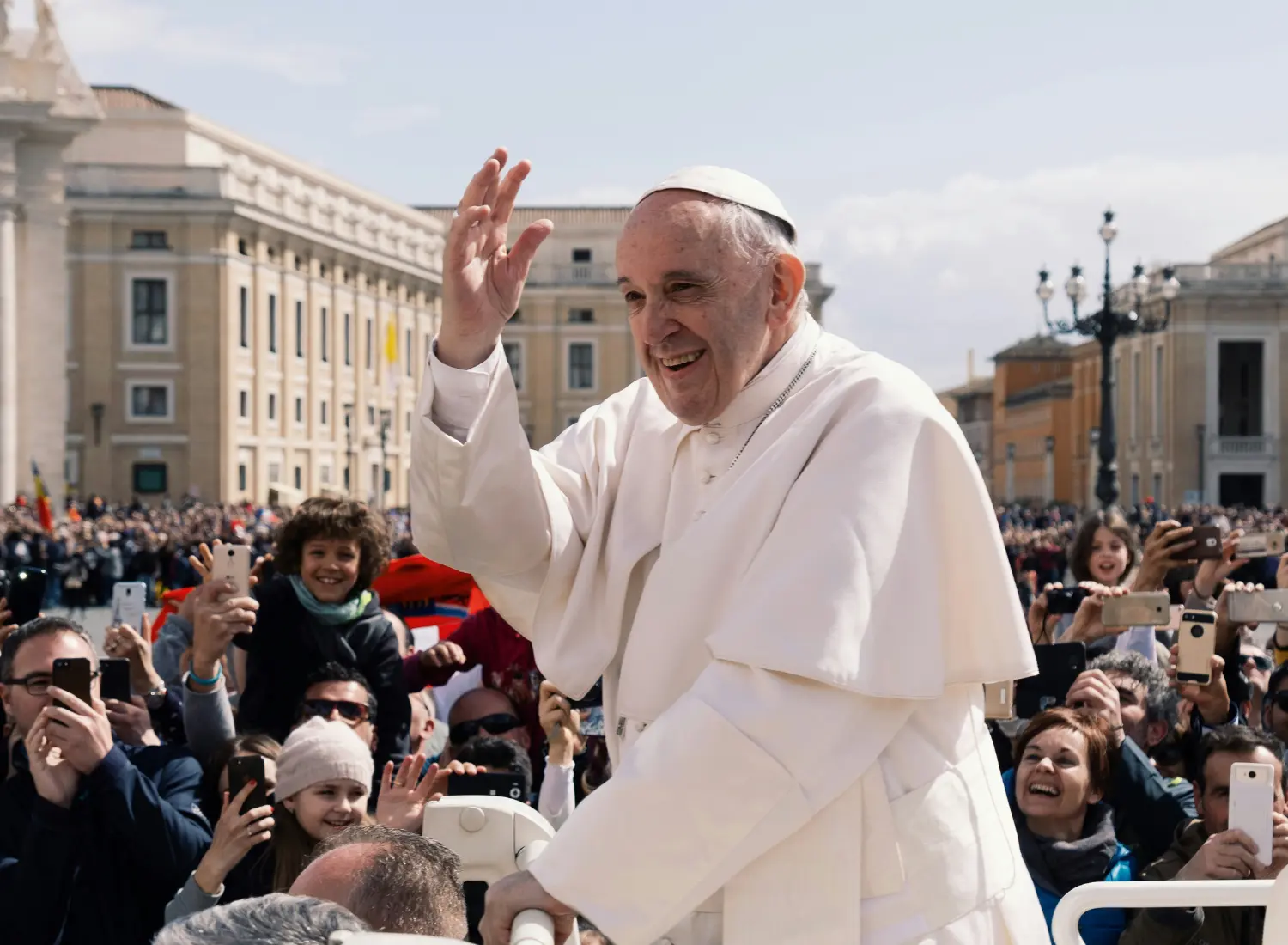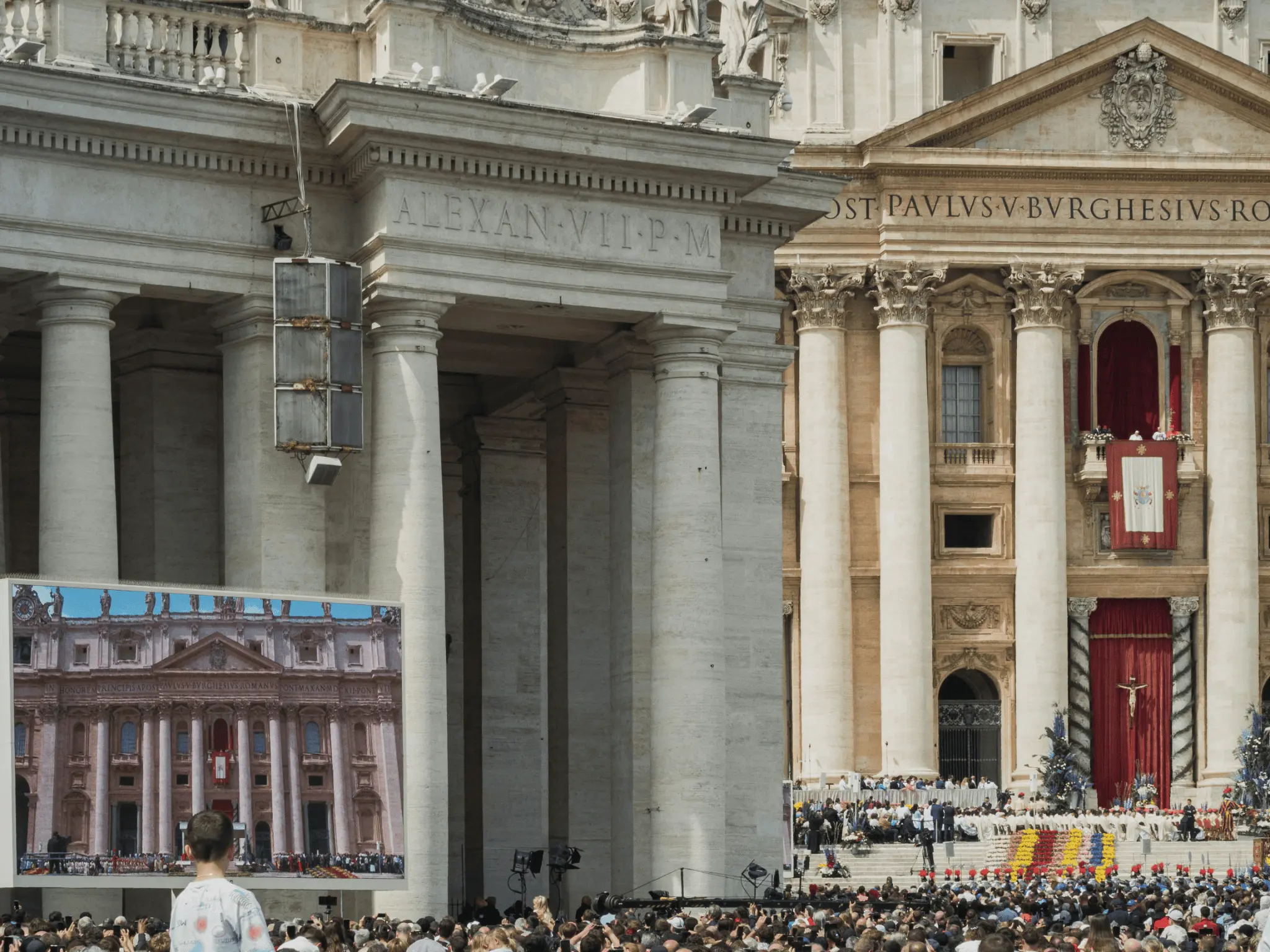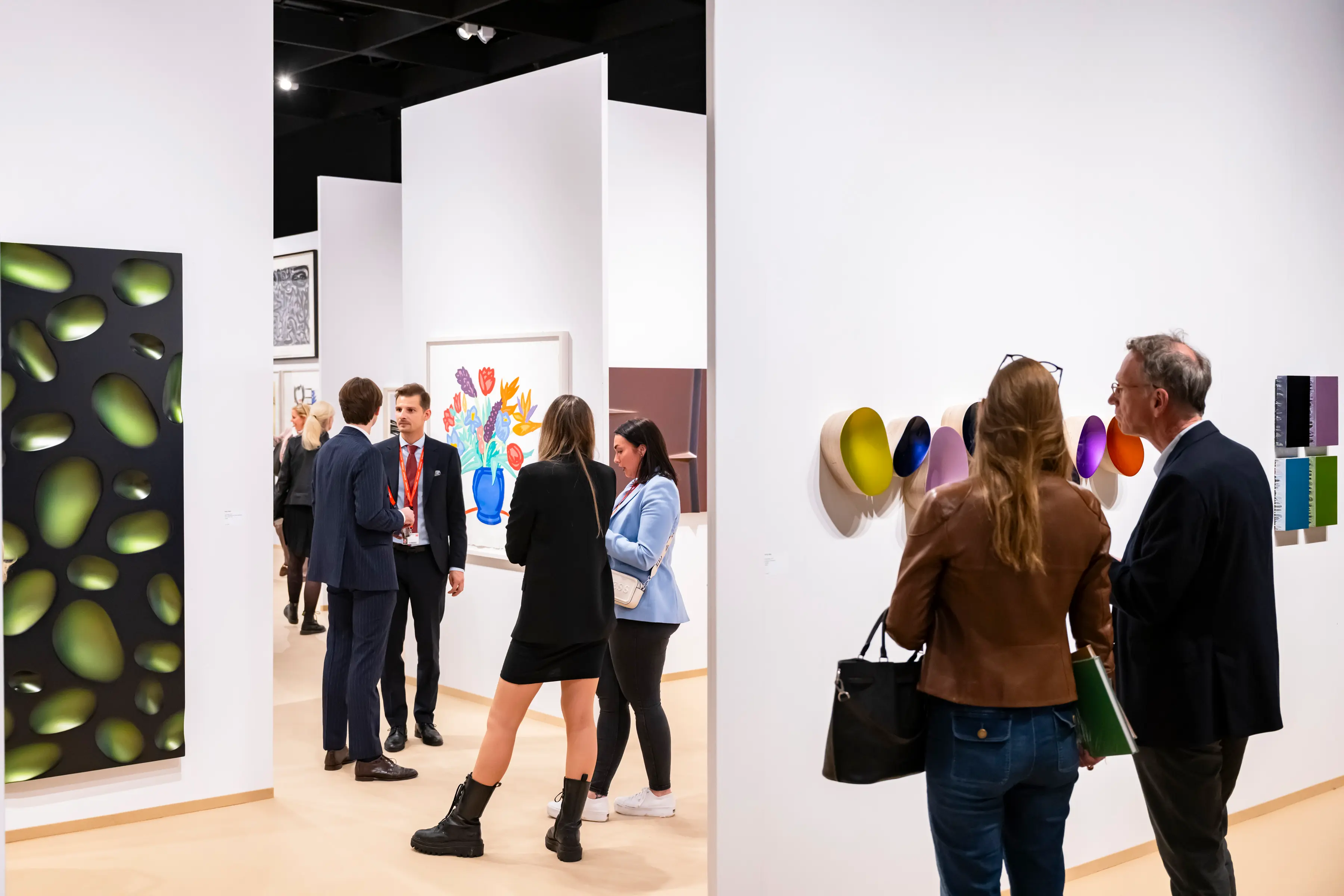Pope Francis’ Funeral

Courtesy of Henge
Courtesy of Andreas Simopoulos
Courtesy of Dave Benett
Courtesy of Japan Mobility Show
Courtesy of ART Cologne
Courtesy of whenobjectswork / Kate Hume
Courtesy of Ivan Erofeev
Courtesy of Stéphane ABOUDARAM - WE ARE CONTENT(S)
Courtesy of Sacha Moreau / Global Gift Gala Monaco
Courtesy of Fadi Al Shami
Courtesy of Sofia Hartmann
Courtesy of Historyhd
Courtesy of Mick De Paola
Courtesy of the artist (c) VG Bild-Kunst, Bonn 2025. Photography by Jens Ziehe.
Courtesy of Yasamine June
Courtesy of Rawisara Prachaksubhanit
Courtesy of Mariia Dred for Berlin Fashion Week
Courtesy of Michael Fousert
Courtesy of Raden Prasetya
Courtesy of Antonia Tewes
Courtesy of Antonia Tewes
Courtesy of Carlo Bazzo
Courtesy of Artem Zakharov
Courtesy of James Cochrane / Copenhagen Fashion Week SS26
Courtesy of Fashion Week Studio
Courtesy of Burak Goraler / AFW
Courtesy of Antonia Tewes
Courtesy of SF / Luigi Caputo
Courtesy of Bruno Cordioli / CC BY 2.0 via Wikimedia Commons
Courtesy of Dubai Fashion Week / Ruzaini Official
Courtesy of Frieze Seoul 2025 / Wecap Studio
Courtesy of LecartPhotos
Courtesy of Jacopo Salvi / La Biennale di Venezia / ASAC Photo
Courtesy of Campione d’Italia’s Classic Circuit
Courtesy of Maxi Yacht Rolex Cup
Courtesy of Jochem Raat
Courtesy of Corey Watson
Courtesy of Pitti Immagine / Fragranze
Courtesy of Le Sable
Courtesy of Once Milano
Courtesy of Monaco Yacht Show
Photo by Darren Carroll/PGA of America
Courtesy of Guy Bell / British Art Fair
Photo by Sean Zanni / Patrick McMullan via Getty Images
Courtesy of Messe München GmbH / Thomas Plettenberg
Courtesy of ph G Martin-Raget/SNST
Courtesy of David Pupăză
Courtesy of Derek Rose
Courtesy of Jim Winslet
Courtesy of Millie Turner/BFI
Photo by Hugo Glendinning. Courtesy of Frieze
Courtesy of Rolex / Kurt Arrigo
Courtesy of Laura Dupuy
Courtesy of Palm Beach Show Group
Courtesy of Getty Images for Perelman Perfor
Courtesy of BFA 2025
Images credited Jason Alden courtesy of LAPADA
Courtesy of Informa Markets
Courtesy of The Qatar Boat Show
Courtesy of Getty Images for Baby2Baby
Courtesy of Jeanne Canto
Courtesy of Darian DiCianno
Courtesy of David Long/Cancer Research UK
A
T
I
O
T
M
I
L
L
L
C
S
S
T
T
A
T
H
F
T
E
F
O
A
T
F
I
T
T
T
T
I
I
T
I
O
P
S
A
S
U
O
A
E
G
B
I
A
I
L
I
T
M
O
G
U
I
L
S
N
I
D
U
T
A
F
I
W
F
O
A
A
M
L
I
he funeral of Pope Francis on April 26, 2025, was a solemn and historic occasion, attended by approximately 250,000 mourners who gathered in St. Peter’s Square and the surrounding areas. The ceremony, held in St. Peter’s Basilica, was a testament to the Pope’s life of service, humility, and dedication to the marginalized. This revised account provides a factual overview of the event, highlighting the presence of political and religious leaders, the simplicity of the ceremony, and the absence of celebrity involvement.
Political and Religious Figures: A Global TributePope Francis’ funeral was attended by a diverse array of political and religious leaders, underscoring his role as a bridge-builder and advocate for peace. Approximately 50 heads of state were present, including U.S. President Donald Trump, French President Emmanuel Macron, and Ukrainian President Volodymyr Zelenskyy. Religious leaders, primarily cardinals and bishops, also attended.
The ceremony was led by Cardinal Giovanni Battista Re, who delivered a homily describing Pope Francis as “a shepherd among the people.” The funeral Mass was conducted in Latin, with prayers also offered in Polish, Chinese, Arabic, and Portuguese, reflecting the global reach of the Catholic Church.

The Ceremony and BurialThe funeral Mass began at 10:00 a.m. local time and followed a traditional Catholic structure. Following the Mass, Pope Francis was buried in the Basilica of Santa Maria Maggiore, a departure from the custom of interring popes beneath St. Peter’s Basilica. This choice reflected his personal devotion to the basilica and his desire for a humble resting place.
Legacy and Future ImplicationsPope Francis’ funeral underscored his legacy as a “Pope of the people,” who championed the poor, refugees, and the environment. His death on April 21, 2025, marked the end of a papacy that sought to bring the Church closer to the marginalized and address global challenges such as climate change and inequality.


The conclave to elect his successor is expected to take place in early May 2025, with 135 cardinals gathering to decide whether to continue his progressive agenda or shift toward a more conservative direction. The funeral highlighted the global impact of Pope Francis’ papacy through the presence of world leaders and the outpouring of public grief.
The funeral of Pope Francis was a fitting tribute to a pontiff who prioritized humility, service, and inclusivity. It was not a spectacle of celebrity culture or political maneuvering but a solemn and dignified farewell to a leader who sought to embody the Church’s mission of compassion and justice.As the Catholic Church looks to the future, the legacy of Pope Francis will continue to shape its path, reminding the world of the power of faith, humility, and solidarity.












